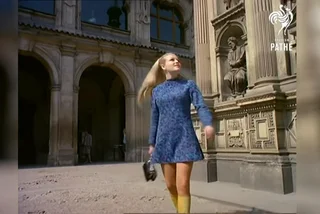Charles Bridge has spanned the Vltava river since 1357, but it statues are relatively new. The most famous, a likeness of St. Jan Nepomucký, was put in place in 1683, some 340 years ago. It's not only the oldest of the current array of statues on the bridge but also one of the only originals.
Due to an error in a popular chronicle, the statue was installed in 1683 on what was thought to be the 300th anniversary of the death of Jan Nepomucký. According to the current church calendar, he died on March 20, 1393, not 1383.
Unlike the rest of the statues adorning the bridge, St. Jan Nepomucký is bronze, made to withstand the weather. The other 29 statues lining both sides of the bridge railing are primarily sandstone, which slowly wears away. Since 1965, copies of these have been replacing the worn originals.
The idea for the statue came to Prague nobleman Matyáš Wunschwitz in a vision sometime around 1650. Wunschwitz waited until 1681, when the supposed anniversary was around the corner, to commission Viennese artist Matthias Rauchmiller to make a small, rough clay model.
Wunschwitz then asked the relatively unknown sculptor Jan Brokoff to make a large and more detailed wooden copy that would become the basis for casting the final bronze version in Nuremberg, as Prague lacked a foundry that was up to the task.
The clay model now belongs to the National Gallery Prague, while the gilded wooden version since 1819 can be seen on the altar of the Church of St. Jan Nepomucký on the Rock (Kostel svatého Jana Nepomuckého na Skalce) at Karlovo náměstí.
While everyone agrees the statue was placed on the bridge in 1683, the exact timeline remains uncertain. Some sources say the finished statue was placed on Charles Bridge on Jan. 25. Others say it was cast at the end of January and unveiled on Aug. 31, which was considered Jan Nepomucký's feast day.
Touching base
Today the statue has become a must-see for tourists. Throngs of people wait in line to touch either the dog or the falling figure (a depiction of the saint) featured on the bronze plaques at the base of the statue. The legend says that those who do so will return to Prague.
The origins of the legend aren't exactly ancient. Right after the Velvet Revolution, tourists began to throng to the city, with shrewd locals reaping the benefits.
The tradition of touching the plaques is attributed to enterprising students who stood in front of the statue and charged unwitting tourists 50 hellers – half a crown – for the privilege. At the time, a bottle of beer in a shop cost about 3 Czechoslovak crowns, meaning six people would add up to some decent refreshments. Exactly how long this business lasted is unclear, but the legend lives on.

Photos of the base of the statue taken before 1990 seem to confirm the story, as none of today's sheen can be seen near the plaque's dog or the falling figure; pictures from the early 1990s reveal a rather small polished area.
A second memorial for Jan Nepomucký is located on the Charles Bridge as well – a cross embedded in red stone on the railing, with a metal grate and a small sculptural figure of the saint behind it. Those who touch this memorial for luck place five fingers of one hand on the five stars that surround the cross and touch the sculpted image with the other. This tradition emerged to handle the overflow from the long lines at the statue.
Who was St. Jan Nepomucký?
Jan Nepomucký was a priest, the vicar general of the Archbishop of Prague. The legend says he refused to tell King Wenceslas IV what Queen Žofie had confessed to him. Jan was tortured and then thrown into the Vltava river to drown, hence the image of the falling figure on the bronze plaques.
Scholars, though, reject this account. Instead, they say there was a dispute over the appointment of a new abbot for the monastery in Kladruby. King Wenceslas IV objected to the appointment, but only after it had been confirmed.
King Wenceslas IV had Jan Nepomucký and several others brought in for interrogation. Jan Nepomucký seems to have died while being tortured. The others were released. His body was then disposed of in the river.
Jan Nepomucký’s remains are housed in a large silver reliquary in St. Vitus’ Cathedral at Prague Castle. An examination of the bones in 1993 showed that the skull had suffered what was likely a fatal blow.
Rise as an important Czech figure
Jan Nepomucký depiction as a significant figure in the Czech lands didn’t begin until the mid-1600s after Bohemia fell under Catholic rule following the Battle of Bilá hora. At the time, he wasn't yet a saint. His canonization didn’t come until March 19, 1729, when Pope Benedict XIII officially entered him into the list of saints.

Jan Nepomucký’s feast day of May 16 had been a national holiday in Bohemia until it was canceled in 1925, and his importance began to wane. In the 1950s, he was removed from the civil calendar that listed name days, with Přemysl substituted for May 16.
Annual celebrations of Jan Nepomucký called Navalis were revived in 2009, taking place every year on May 15, the eve of his feast day. A parade processes from Prague Castle down through Malá Strana, crossing the bridge and ending in Old Town with a concert on the water.












 Reading time: 4 minutes
Reading time: 4 minutes 






































